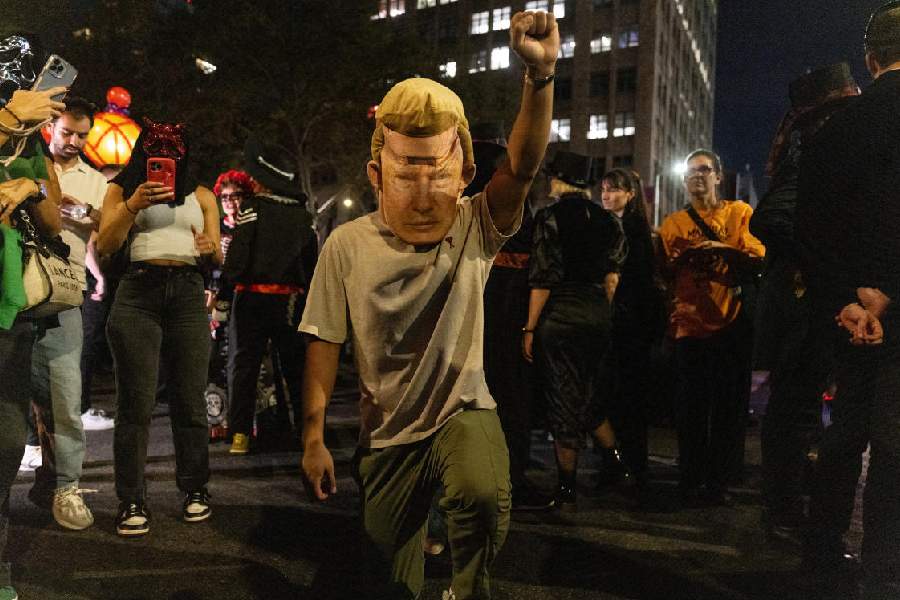James William Grant, an East India Company official posted in Malda, and Captain George W. Lloyd discovered Darjeeling for the British in 1828.
Nearly two centuries on, Grant’s great-great-great-granddaughter — five generations down the line — and other members of the family are in Darjeeling to trace their “native mother”.
Grant’s unknown Indian partner is recorded as “mother, native” in a baptism certificate.
Born in 1788 in Scotland, Grant worked for the East India Company from 1805 till 1849. He married Margaret in 1807. Their 11 children were all born in India. In 1829, when Grant’s elder brother died, Margaret and the children returned to Scotland to take care of the family property.
However, Grant, as the discoverer of Darjeeling along with Lloyd, was entrusted with planning the town and chose to stay back in India until his retirement.
When Grant and Lloyd first came to Darjeeling, it belonged to the kingdom of Sikkim whose borders extended up to eastern Nepal.
In the 1700s, Nepal had repeatedly attacked Darjeeling and conquered the area till the Teesta river. However, the East India Company fought and defeated Nepal and forced it to cede 4,000 square miles (over 10,000sqkm) of territory through a treaty signed at Sugauli in 1816.

JW Grant. Picture courtesy: Esther Blessing
The British gave Darjeeling back to Sikkim but a decade later, another dispute cropped up between Nepal and Sikkim. The British sent Lloyd and Grant in 1828 to broker peace between Nepal and Sikkim.
“While staying in India, J.W. Grant had another partner and they gave birth to Margaret (named after Grant’s first wife) and Charles. I am a descendant of this family line, more specifically from Margaret,” said Susan Elizabeth O’Brien, a doctor based in Adelaide, Australia, and great-great-granddaughter of Grant.
Susan arrived in Darjeeling on Monday with her husband William (also a doctor in Adelaide), daughter Esther (a doctor in New York), and son-in-law George Dawes Green (an author), to try and establish the identity of the “native mother”.
They plan to talk to local historians and get in touch with any possible archives that might have records from the period. Susan’s DNA report gives her a 5 per cent resemblance with people of Indian origin.
“Margaret and Charles, the siblings from the native mother, were taken to England for studies but (later) returned to India and took charge of Bannockburn tea garden in Darjeeling, which their family owned,” Susan told The Telegraph.
The children were baptised before being taken to England. “However, the baptism certificate only states ‘mother, native’,” Susan said.
On Tuesday, the family visited St Paul’s School in Darjeeling where many of their ancestors studied. Grant’s descendants made a mark in Darjeeling and beyond. Richard O’Brien, who married Grant’s daughter Margaret, was a Darjeeling-based doctor and the author of Darjeeling: the Sanatorium of Bengal, and its Surroundings, which was published in 1883.
Another of Grant’s descendants, Charles Richard, was superintendent of the Dhaka Medical College while his cousin George owned the famous Goomtee and Jungpana tea gardens in Kurseong for around 40 years until Independence.
“We visited the Goomtee tea garden on Monday,” Susan said.
Esther, Grant’s great-great-great-granddaughter, said she had always been intrigued by her ancestor’s life.
“Apart from working with the East India Company, J.W. Grant also discovered a star. He was also a botanist who worked closely with Joseph Dalton Hooker (a renowned British botanist),” Esther said.
On July 23, 1844, Grant was the first to establish the existence of the star Antares B.
He was elected a fellow of the Royal Society of Edinburgh. He died on September 13, 1865, at Wester Elchies in Scotland.











